My Accomplishments at WSSG Design Academy
Here is page tracking my accomplishments at Why So Serious Game Design Academy.
Level 0
- Learned my way around Canvas’s features
- Examined the Syllabus
- Explored course-specific details about the WSSG Design Academy
- Identified the Required Textbook and Optional Books
- Reviewed the Mentor Game options
Level 1
- Select two mentor games
- Install and play one of my mentor games
- Learn about empowered learning in games
- Identify the type of player I am and learn how that impacts the games I play
- Explore how game elements present themselves in educational games

You have mastered the art of becoming the player, one who not only plays games for fun but is able to pay attention to what goes on to compare with other experiences. Play is a fundamental part of learning, while not all forms of play may be fun to every learner, that does not mean that learning is not occurring but that it may be occurring in a different way. Mastering this attribute means you have started on the path to understanding how to utilize this through being the learner.

You have mastered the art of recording your thoughts and reflections in a meaningful way. Reflection is a powerful learning tool as it helps one establish and make connections beyond any course content by engaging with personal experiences. Mastering this attribute means you are ready to take on increasingly more complex problems to sort through by reflecting on your experience with them.
Level 2
- Developed game ideas
- Practiced developing stories complex enough for learning
- Formulated a learning objective
- Used Twine/Scratch to create a prototype
- Created my own Narrative Game Design
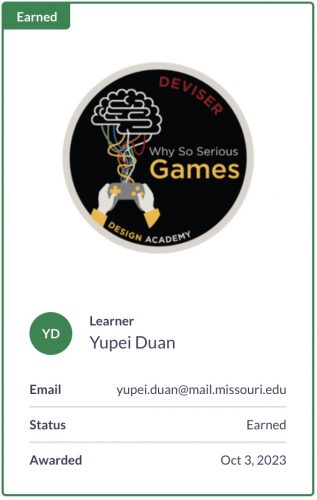
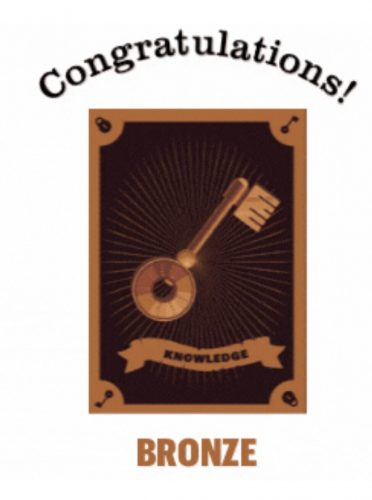
Bronze Knowledge Award. This is a basic level reward for Level. 2.
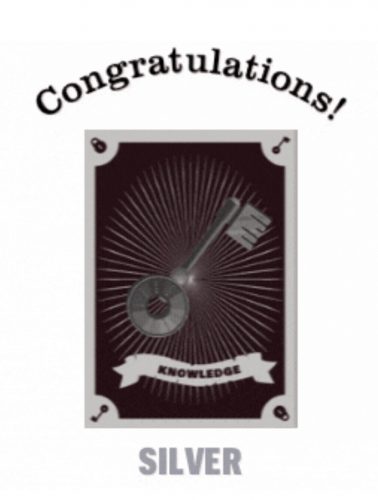
I’ve been awarded the silver knowledge attribute. This is an extra challenge, so I got extra points after the accomplishment.
Level 3
- Distinguished learning domains and how they function in serious games.
- Establish simple and complex mechanics that work best for intended learning objectives.
- Articulated gaming goals and core loops in serious games.
- Applied common game elements and game mechanics to game design to support learning.
- Provided feedback based on building learning in games and general game design to peers.
- Articulated a design for an analog game that addresses higher-order learning outcomes.
- Created an instructional guide for your analog game.
- Implemented paper prototyping of your analog game.
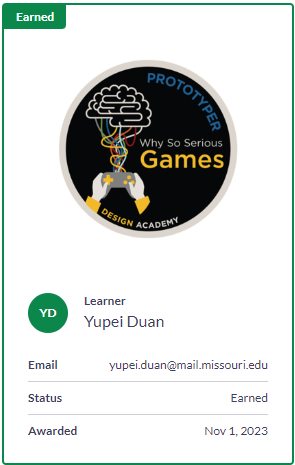




Mechanics are at the heart of every game; they fuel the interaction that players experience in order to progress and eventually win or lose. To earn the Ludology Attribute, you’ve proved yourself to be a true Ludologist (one who focuses on gameplay as the main driving force for a game over narrative) and were able to generate a core loop around the central mechanic of a game. But when working with serious games that are gameplay-driven, you also need to know where the learning happens. You’ve demonstrated mastery of this for serious games by aligning learning to the activities players perform.
Level 4
- Distinguished learning domains and how they function in serious games.
- Establish simple and complex mechanics that work best for intended learning objectives.
- Articulated gaming goals and core loops in serious games.
- Applied common game elements and game mechanics to game design to support learning.
- Provided feedback based on building learning in games and general game design to peers.
- Articulated a design for an analog game that addresses higher-order learning outcomes.
- Created an instructional guide for your analog game.
- Implemented paper prototyping of your analog game.
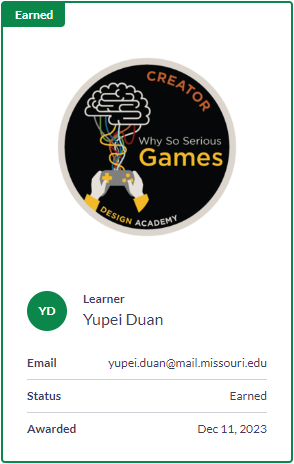
To earn the Creator Badge, trainees must complete the final project and post their completed designs to their blogs.
The end of the training is completed by creating a design document and key scene in a game engine.
Awarded for completing requirements in group 2023FS-IS_LT-7384-01: LEVEL 4 | Complete the Level

At the heart of learning how to design games for learning, you have focused your efforts on the construction of games. This entails not simply creating games but constructing them from knowledge across your training experience into a development tool, building an understanding as we go through analysis and evaluation. To earn the constructionist attribute, you have demonstrated you are capable of guiding yourself through learning the tools necessary to create digital learning games — game engines.
Level 5
- Applied my knowledge from previous levels on empowered learning
- Adapted my feedback into my design for the final submission
- Finalized my game prototype using Construct 3
- Created a pitch presentation of my revised game design

To earn the Designer Badge, trainees must submit initial design ideas or storyboards that include the educational component of achievements for assessing learning objectives within their game’s design.
Demonstrated the ability to design a digital game for learning. Earning this badge indicates that a trainee has made it through all the aspects of design that have been revisited to aid in the design of a simple digital game.
Awarded for completing requirements in group 2023FS-IS_LT-7384-01: LEVEL 5 | Complete the Level

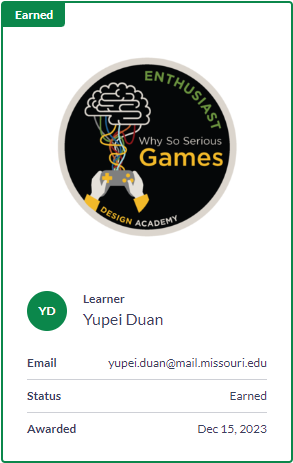
Evidence of all attributes and badges earned along the 16 week training.
Awarded for completing requirements in group 2023FS-IS_LT-7384-01: LEVEL ALL | Learning Game Enthusiasts Unite! [Week 1 – Week 16]
My Giant Leap to “GBL”

Content
- All blog articles will be updated in the Learning Technologies category in my blog: 教育技术 Learning Technologies | SciShine
- All badges and other contribution certificates will be accumulated and shown on this page:My Accomplishments at WSSG | SciShine
Let’s Game!
I registered Dr. Danielle Oprean’s Designing Games for Learning in the Fall semester of 2023, the first year of my Ph.D. program at the School of Information Science and Learning Technologies in the University of Missouri. Dr. Oprean is my gaming guide and Arch McGee is my personal advocate.
In my previous learning and working experience, I had a limited understanding of the relationships between games and learning. This is my first formal chance to learn games very seriously since “games” in my mind is the opposite word of “learning.” I will record my takeaways from the course and show my learning progression for the coming months. This course opened a brand-new door for me to Game-based Learning (GBL). To most of my classmates, it might be a small step, but to me, it is my giant leap to GBL.
During this journey, I will broaden and enhance my knowledge and competencies of GBL with conducting rotational practices:
Reading/Play (Play)
Knowledge Challenges (Analyze)
Discussion Board (Commune)
Practice Assignments (Adapt)
Blog Posts (Design)
Level Assignments (Create)

My VR Teaching Experience
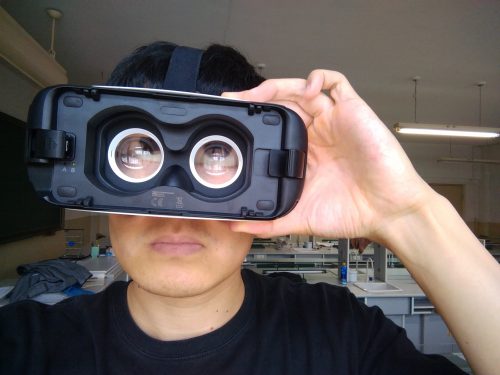
VR (Virtual Reality) was still a fancy name in 2015, especially in K-12 school settings. When I had a chance to use Oculus Rift to teach scientific knowledge in my class, I felt excited and lucky. The first taste of this new staff was an open course to show the availabilities of using VR in everyday instructions. Many observers had limited knowledge about VR, as well as most of my students. So, I used some time to introduce the background of the theory and functions of the Oculus Rift in the beginning. Then, I led all the participants to try some easy softwares to familiarize themselves with the equipment.
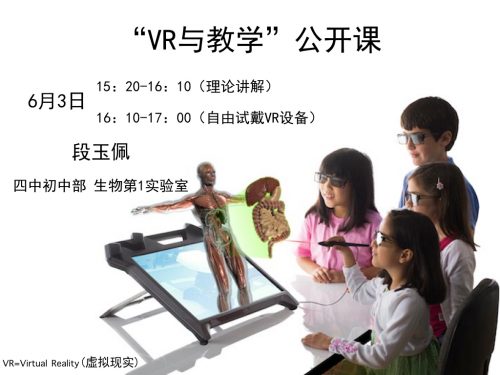
The first open course received a few positive feedback, meanwhile some concerns about the reality of using VR in daily instructions had also been raised, and soon there came the second one, Voyage in Human Body.

I invited the learners, including students and teachers to use their recent learnings in my biology class to do free exploration using Oculus Rift, then explain the phenomena they experienced. Finish the handout by themselves to reach the instructional objectives. The learners were fascinated by both the hardware and software. Some students who are short of learning passion even would like to try and ask more questions about human body structure and functions than usual. VR had the potential to diliver individual instructions.
After the two open courses. I designed and recorded some VR programs. One of them was The Flowers in Beihai Park. If you have VR glasses, you can try it.
There is a lot of potential hidden in instruction with using VR. More professional research and practical reflections need to be done in this area.
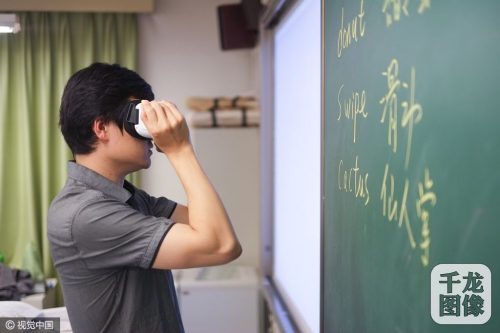
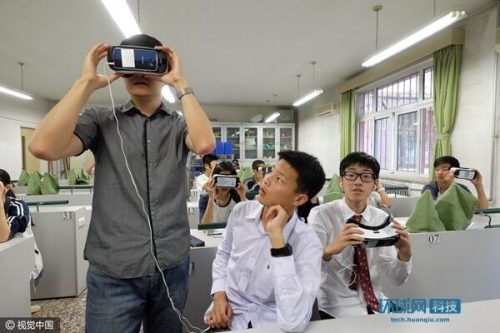
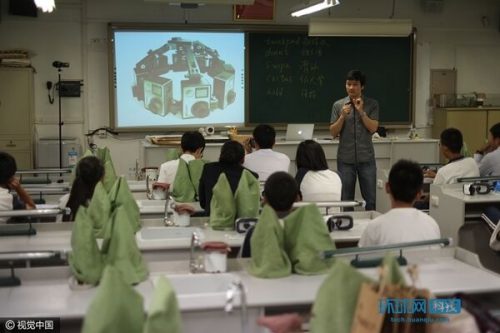
References:
- http://tech.cnr.cn/techit/20160606/t20160606_522327925.shtml
- https://tech.huanqiu.com/gallery/9CaKrnQhtDT
- https://item.btime.com/378v4kal4ou909pqk8lcp1rgvho
How to Assist Online Instructors in K-12 Education in China 如何辅助中国K-12学校教师实施在线教育
How to Assist Online Instructors in K-12 Education in China
Yupei Duan
Curriculum Center, Future Leadership Academy, Hai Nan, China
School of Information and Learning Technology, University of Missouri, Missouri, The USA
December 12, 2020
How to Assist Online Instructors in K-12 Education in China
Background and Significance of the Research
Carliner and Shank (2008) have summarized four key challenges of e-learning: Organizational Barriers, Pedagogical, Technical and Financial Issues. China is faced with most of these issues, together with some unique challenges (Y. Wang et al., 2018a). Teachers are vital component in education. Online teachers have a variety of roles they need to play, such as: evaluator, administrator, technologist, advisor/counselor, researcher, etc. and they should be equipped with multiple competencies (Baran et al., 2011). It is critical to prepare and support teachers for online teaching so that they know what to expect and how to establish their online teacher persona through online pedagogies, and also develop positive attitudes towards online teaching. By incorporating collaborative work groups, community building, and group discussions into professional development programs, and sustaining their continuity, teachers will have an opportunity to participate in communities of practice and transform their teaching by socially constructing their knowledge and practices (King, 2002).
The COVID-19 affected the whole world a lot. It was a test for the online education in different countries and districts. During the pandemic period, educators and students had to rely on online education to continue schoolings. The development of Online education in China has been constrained by a lot of limitations. Zhanyuan Du, Vice Minister of Education of China, has stressed that there are three key tasks for e-learning development in China: “teachers’ and students’ acknowledgement of e-learning, teachers’ capacity for integrating ICT with daily instructions, and production of sufficient quality resources so that teachers can focus on pedagogical design (中国教育信息化要解决三问题 – 信息化动态 – 中国教育信息化网, 2015).” While more teachers in China are equipped with the basic Information and Communication Technology (ICT) knowledge and skills and get more knowledge about e-learning, the situation of China’s online education might be better. Since ICT is the foundation of online education, teachers who have more abilities about ICT, who could understand the value and usability of online education, who might integrate ICT more in their daily instructions, and who have more possibilities to yield higher-quality online education production.
Problem Statement
This study aims to explore the experiences, suggestions and standards for assisting online instructors to present higher-quality online instructions drawing mostly from the USA, and introduces some useful strategies from institutes who have been endeavoring to establish high standard online education from all over the world to China’s K-12 schools. With practice and comparation to make the most suitable one for China.
With collecting data from practices in some volunteer Chinese K-12 schools, the researcher wants to finish the first draft of Chinese K-12 online education standards and design some useful in-service or pre-service trainings for Chinese online instructors.
Purpose of the Study
The researcher will focus on the online education at China’ K-12 school context among the different types of online education. The COVID-19 pandemic has made all stake holders at schools: parents, students, educators and administrators to realize the value of high quality of online education much better. There are a lot of startups and E-giant companies are seizing the profit of online education by inventing new Apps and platforms, and establishing online courses and commercial training programs to the K-12 students in China. There has been so much growth in this market that the government has issued a lot of regulations to control them(Growth of China’s Online Education Industry Spurs New Regulations, 2020) . The fast increase need of high-quality online education from learners are apparent. Yet the supportive standards for evaluating and establishing online education were limited in China. On the other hand. If the students can get high quality online education from their own school with their familiar educators and yield more learning outcomes, why they need to pay extra money out of school? The more expansive thing for the learners is not money but time.
The author could not find formal instructions to assist teachers about how to do high-quality online teaching in Chinese. However, there is a great deal of information in English. What kinds of online teaching standards, teaching strategies suggestions the Chinese online educators need currently? What kinds of online learning tips Chinese learners should be aware of to yield higher online learning outcomes? Is the information workable, effective and efficient? The mixed-methods will be used during the research.
Literature Review
Sources deemed most relevant to the topics were selected for further analysis; preference was made to recent (published during 1999-2020) articles, but older sources were included especially the classical ones which contain impressive points and suggestions. These articles were searched and collected through google scholar and University of Missouri Columbia Libraries, utilizing the following search tactics: K-12, Online Education, Online Teaching, Standards, etc.
Online Education Definition and its Development in China
E-learning, also known as online learning, digital learning or computer-based learning, can be defined as education provided on digital devices that support learning (Clark & Mayer, 2011). The use of Information and Communication Technology (ICT) in education has given rise to diversified pedagogical models and methods, including networked learning, multimedia education, online and open education, and blended learning. In China, the term ‘ICT in Education’ is used interchangeably with the more general term ‘e-learning’ (Y. Wang et al., 2018b). With rapid economic development, China is becoming able to provide better infrastructure and other necessary conditions for schools (e.g. more high-quality computer labs, more learning soft wares and more online learning strategies), E-learning is believed to be a promising approach since it offers students ways to interact with experienced teachers or professors (Q. Wang et al., 2009).
In the first four years after 1996, the growth of online schools (at China) was fast, and the concepts of e-learning and online school were formulated. In the following four-year adjusting stage, the number of online schools decreased remarkably as some investors and managers of over-emphasized on financial gains but while ignoring Standards of web-based education. At the steady stage(2005-2009), managers and teachers have paid more attention to the educational role of online schools. They have developed better understanding and an improved model of cooperation. For example, one of the styles of cooperation is named “Two Instructors Cooperation Model” which means while one instructor teaching virtually, there is the other instructor (teaching assistant) working in the physical classroom to direct the students to dig more from the online instructions.
There are three models of running K12 online schools in China. Some online schools are run by a consortium of the government, or by an enterprise or a school alone. Most online schools in China are supported by private enterprises (Q. Wang et al., 2009). Online education, also known as virtual or cyber schooling, is a formal of distance education that uses the Internet and Computer technologies to connect teachers and students and deliver curriculum. Students may also communicate online with their classmates, students in other schools around the world and experts to whom they might otherwise not have access. Online learning may take the form of a single course for a student who accesses that course while sitting in a physical school, or it may replace the physical school for most or all of a student’s courses (Watson & Gemin, 2010).
K12 Online Education Market in China
In 1996, China’s first primary and secondary education website (online school), 101 online school, was established. Four year later, the Beijing No.4 Online School was built. The education at this time was mainly based on academic education, and the form was mostly based on a single form such as text mail. The interactive form was not strong, mainly based on traditional education methods (Chen et al., 2009). Students and online teachers could only use text to do interactive activities. There were no other choices for the online learners in China who wanted to get higher quality K-12 online instructions. The reasonable online instructions should be more interactive which requires the online instructors to communicate with the learners closely and share the feedback of the learners’ information with their parents frequently. Online instructors need to foster the online learners’ enthusiasm and interest in learning. It is also the online instructors’ duty to embed more technique tools and enhance their skills to improve their online teachings (Hu & Meyen, 2013).
Both Beijing 101 school and Beijing No.4 School are two of best high-schools in Beijing, China. (The author worked at Beijing No.4 School for ten years and has learnt that there were very few requirements for online instructors who taught at Beijing No.4 Online School.) In the past decade, online education market in China changed so fast. More and more companies like “Gen Shei Xue”, “Hao Wei Lai”, “New Oriental School”, etc. have stepped into the K-12 training market to set very high standard and expectations of online education. The parents would prefer to pay more money to buy better online education from these kinds of companies for they keep improving their online teaching strategies (Huang & Hong, 2017).
Quality of Online Teaching
To help China’s K-12 online instructors improve is the first step to get high-quality K-12 online education. Without clear and specific goals, the online instructors will lose themselves and cannot improve their online instructions highly (Baran et al., 2011). There are a lot of mature online teaching standards and suggestions written in English world which might be meaningful for Chinese colleagues.
In 2010, an international quality standard for e‐learning programs – “Open ECBCheck” – was officially released. ECBCheck is an accreditation and quality improvement scheme for e‐learning programs which supports organizations in measuring the success of their programs and allows for continuous improvement though peer collaboration. It was developed through an innovative and participative process involving more than 40 international, regional and national capacity‐development organizations (Open ECBCheck – Quality Improvement Scheme for E-Learning Programmes | GIZ Global Campus 21, n.d.).
In the standards (E-Learning Methodologies – A Guide for Designing and Developing e-Learning Courses, n.d., p. 14), the quality of an e-learning course is enhanced by: (1) Learner-centered content: E-learning curricula should be relevant and specific to learners’ needs, roles and responsibilities in professional life. Skills, knowledge and information should be provided to this end. (2) Granularity: E-learning content should be segmented to facilitate assimilation of new knowledge and to allow flexible scheduling of time for learning. (3) Engaging content: Instructional methods and techniques should be used creatively to develop an engaging and motivating learning experience. (4) Interactivity: Frequent learner interaction is needed to sustain attention and promote learning. (5) Personalization: Self-paced courses should be customizable to reflect learners’ interests and needs; in instructor-led courses, tutors and facilitators should be able to follow the learners’ progress and performance individually.
The third edition of American National Standards for Quality Online Teaching purposely provided the K-12 online and blended learning community with an updated set of openly licensed standards to help evaluate and improve online courses, online teaching and online programs with the contribution from another two documents known collectively as the : American National Standards for Quality Online Programs and American National Standards for Quality Online Courses (Powell et al., n.d. P5). The set of standards served to inform the team, allowing them to make community and research supported updates. Subsequently, author took time to evaluate each standard and found they met the following criteria: measurable, valid, complete, relevant, and specific. Chinese online instructors can check the standards with clear definitions and explanations with examples to transfer to their online teaching actions.
Besides the formal standards which can help online instructors clarify their to-do lists about how to provide appropriate online instructions, the suggestions from some institutes are useful to bring more insights to improve online education for K-12 online instructors, especially during the COVID-19 pandemic spread period. The Danielson Group Remote Teaching Guide (Danielson Group Remote Teaching Guide.Pdf, n.d.) is one of them. Each academic year, the subject teachers in the author’ school will provide at least two class periods to be observed by the members in Academic Department to show their teaching abilities which we name them formal observations. The Academic Department members will use the Framework (Danielson, 2014) for teaching from the Danielson group for assessing subject teachers’ formal observations. The Remote Teaching guide is reflected in Framework for Teaching which shared eight suggestions to online instructors from knowing and valuing the online learners to build responsive learning environment, then to engaging students in learning. The online instructors will find more valuable strategies and tips to miss overwhelming when they conduct online instruction if they delve into deeper with reading and practice the suggestions in the guide.
Trainings for Enhancing Instructors’ Online Teaching Competencies
As online learning grows in K-12, the need to prepare quality online instructors increases (Borup & Evmenova, 2019). There are a lot of barriers the quality online K-12 instructors need to learn to cross. The barriers between the good online K-12 classroom and low efficiency which were listed two decades ago still affect online instructors. The barriers are: Academic, Fiscal, Geographic, Governance, Labor-Management, Legal, Student support, Technical, Cultural (Berge & Mrozowski, 1999). If the teachers did not learn how to face to the barriers when they were in the college, they may get some in-service professional development (PD) programs to help them add this part of competencies. If the PD programs are held fluently, the learners may improve their online teaching skills and knowledge (first-order barriers to change) and nurturing positive attitudes and dispositions (second-order barriers to change) (Borup & Evmenova, 2019). The online PD itself is a good model to show the learners about what is a good online course you need to learn to conduct. There are a lot of difference between face-to-face teaching and online teaching. Barbour (2012) found that the different competencies were required to deliver high quality online teaching. Even the experienced face-to-face teachers might fail to present quality online instructions. The effective PD program will deliver content and assignment proved effective at increasing faculty members’ knowledge and skills, but it was the course delivery and the opportunity to learn as an online student that appeared to most impact faculty members’ attitudes and perceptions of what was possible in online learning environments. In other words, the method was just as important as the message. When designing professional development courses, universities (or other departments) not only need to consider what will be learned but how it will be learned. If courses do not model effective online instruction, they run the risk of increasing faculty members’ skills without improving their practice (Borup & Evmenova, 2019). There are some successful PDs like Borup and Evemenonva’s PD ( 2019) which covers the following topics: (1) course design and development, (2) assessment and feedback, (3) student collaboration, (4) discussions, and (5) presence and support.
Methodology
- Mixed-Method
The mixed-methods will be used. While conducting a bibliometrics focus on online teaching, hybrid teaching, online education standards, etc. The information will be concluded and compared to be selected as suggestions for assisting Chinese K-12 online teachers in their trainings and in-service instructions. Then, some questionnaires will be distributed to online educators, learners and parents to get their feedback about online instructions. The data will be used by qualitative and quantitative methods to test which suggestions or standards will be useful to the online instruction stake holders.
- Research Model
- Brief rationale for the selected approach
With the qualitative and quantitative research, the researcher can collect more divisions of feedbacks about online instructions from online teachers, learners and parents. The aims of the research are figuring out the most reasonable and workable assistance to Chinese K-12 online instructors. We hope to stand on the giant’s shoulder and face to the reality of China’s K-12 online education to compose two documents: Chinese Online Instruction Standards, and Chinese Online Instruction Suggestions, besides that, we will develop PD programs to assist Chinese K-12 online instructors. We wish they are reasonable and meet China’s online instructors’ expectations. Due to the different cultural and historic backgrounds in China and other countries or districts, the experiences from others must be improved to be embedded in Chinese education context. That will be the researcher’s following research aims.
Variables
Independent variables: online teaching standards with using or not; online teaching suggestions with delivering or not; Weather took part in the PD for assisting online instructors developed by researcher.
Dependent variables: Online teachers’ instructional performance scores with using online teaching standards to evaluate; Teachers’ online instruction materials establishing time using before and after training; Teachers’ degree of satisfaction of online instruction before and after training; Online learners’ degree of satisfaction of online education; Parents’ degree of satisfaction with online education.
Sample
170 online learners from primary school, secondary school and high school.
50 online teachers from Future Leadership Academy (a private K-12 school).
100 college students who want to be teachers after graduation at Beijing Normal University.
100 in-service teachers in China K-12 schools.
100 parents whose kids are having online courses.
Data Collection
Qualitative data: Survey, interviews
Quantitative data: Survey, formal observations, data record on learning management system, interviews
Ethical Considerations
Students and parents’ privacy protection. The data from the students and parents will be ONLY used for research and will not be open to others without erasing the names of the students and parents.
Data Analysis
Correlation Analysis using SPSS
Timeline
February, 2021. Preparation period:
In the coming school-wide professional development program, the research proposal will be informed.
February, 2021. Transition period:
the online instructors will be required to having online teaching trainings. The suggestions and strategies will be shared with them as well.
March, 2021. Orientation period:
- The online learners and parents will be delivered online education orientation with introducing more details of online courses and suggestions for online learnings.
- The online instructors will be directed to have online trainings with sharing more online teaching standards.
April-June 2021. Formal online instructions conduction
- Data collection.
- Survey
- Interviews to teachers, students and parents.
July 2021. Data analysis and reaching a conclusion
References
Baran, E., Correia, A.-P., & Thompson, A. (2011). Transforming online teaching practice: Critical analysis of the literature on the roles and competencies of online teachers. Distance Education, 32(3), 421–439. https://doi.org/10.1080/01587919.2011.610293
Barbour, M. k. (2012). Training teachers for a virtual school system: A call to action. In Developing Technology-Rich Teacher Education Programs: Key Issues. IGI Global.
Berge, Z. L., & Mrozowski, S. E. (1999). Barriers to Online Teaching in Elementary, Secondary, and Teacher Education. https://doi.org/10.21432/T2P59B
Borup, J., & Evmenova, A. (2019). The Effectiveness of Professional Development in Overcoming Obstacles to Effective Online Instruction in a College of Education. Online Learning, 23(2), Article 2. https://doi.org/10.24059/olj.v23i2.1468
Carliner, S., & Shank, P. (2008). The e-learning handbook: Past promises, present challenges (MU Ellis Library). Pfeiffer.
Chen, L., Wang, N., & Qiao, A. (2009). K12 online school practice in China. Campus-Wide Information Systems, 26(2), 137–144. https://doi.org/10.1108/10650740910946864
Clark, R. C., & Mayer, R. E. (2011). E-learning and the science of instruction: Proven guidelines for consumers and designers of multimedia learning (MU Online; 3rd ed.). Pfeiffer.
Danielson, C. (2014). The framework for teaching: Evaluation instrument.
Danielson Group Remote Teaching Guide.pdf. (n.d.).
E-learning methodologies—A guide for designing and developing e-learning courses. (n.d.). 141.
Growth of China’s Online Education Industry Spurs New Regulations. (2020, March 12). China Briefing News. https://www.china-briefing.com/news/growth-chinas-online-education-industry-spurs-new-regulations/
Hu, X. C., & Meyen, E. L. (2013). A Comparison of Student and Instructor Preferences for Design and Pedagogy Features in Postsecondary Online Courses. In Curriculum, Learning, and Teaching Advancements in Online Education. IGI Global.
Huang, X., & Hong, W. (2017). Live Streaming Teaching Applied in Real English Classroom. DEStech Transactions on Social Science, Education and Human Science, 0(aems), Article aems. https://doi.org/10.12783/dtssehs/aems2017/8278
King, K. P. (2002). Educational technology professional development as transformative learning opportunities. Computers & Education, 39(3), 283–297. https://doi.org/10.1016/S0360-1315(02)00073-8
Open ECBCheck – Quality improvement scheme for E-Learning programmes | GIZ Global Campus 21. (n.d.). Retrieved October 28, 2020, from https://gc21.giz.de/ibt/var/app/wp342P/1522/index.php/open-ecbcheck/
Powell, A., Oliver, W., Archambault, L., Borup, J., Boyarko, M., Cavanaugh, C., Copeland, R., Day, J., DeRosa-Davis, T., Deschaine, M., Graham, C., Hanson, E., Hernandez, B., Imbrunone, M., Kennedy, K., Consulting, K. K., Kolar-Burden, J., Little, T., Loomis, K., … Online, P. (n.d.). National Standards for Quality Online Teaching. 33.
Wang, Q., Zhu, Z., Chen, L., & Yan, H. (2009). E‐learning in China. Campus-Wide Information Systems, 26(2), 77–81. https://doi.org/10.1108/10650740910946783
Wang, Y., Liu, X., & Zhang, Z. (2018a). An overview of e-learning in China: History, challenges and opportunities. Research in Comparative and International Education, 13(1), 195–210. https://doi.org/10.1177/1745499918763421
Wang, Y., Liu, X., & Zhang, Z. (2018b). An overview of e-learning in China: History, challenges and opportunities. Research in Comparative and International Education, 13(1), 195–210. https://doi.org/10.1177/1745499918763421
Watson, J., & Gemin, B. (n.d.). A Parent’s Guide to Choosing the Right Online Program. 23.
中国教育信息化要解决三问题—信息化动态—中国教育信息化网. (n.d.). Retrieved October 28, 2020, from http://www.ict.edu.cn/news/n2/n20150525_24914.shtml
Read MorePBL: 宋应星在2021
科学和技术,在漫长的历史长河中产生,又搅动了这条长河,逐渐地改变了河的走向和面貌。在人们追索“怎么办?”和“为什么?”时,是科学和技术提供了更有效地工具、方法及思维方式。理性驱散了蒙昧,文明照亮了世界。
我们即将开始的,是一次奇妙的旅行。让我们回溯到科学、技术的起点,阅读历史、欣赏艺术、聆听故事,纵览科学、技术发展的脉络。品评文明突破,讨论理性的重要,更好地理解科学、技术与我们现实生活的联系。
Science(科学)这个词来自于拉丁语“scientia”,意思是“知识、学问”。最早对应的中文单词是《大学》中的“格致”。曾子说:“物格而后知至,知至而后意诚,意诚而后心正,心正而后身修,身修而后家齐,家齐而后国治,国治而后天下平。”儒家担心礼崩乐坏,但科学精神追求的是“吾爱吾师, 吾更爱真理”,身为中国传统知识分子的宋应星,内心有没有过纠结?
Technology(技术)指人类对机器、硬件或人造器皿的运用,同时它也可以包含更广的架构,如系统、组织方法学和技巧。参加科举考试五次不第的宋应星,担没担心过自己的笔记内容被归为儒生不齿的“奇技淫巧”?
在《中国之科学与文明》(Science and Civilization in China)中,李约瑟(Joseph Needham)写道:“就技术的影响而言,在文艺复兴之时和之前,中国占据着一个强大的支配地位……世界受中国古代和中世纪的顽强的手工业者之赐远远大于受亚历山大时代的技工、能言善辩的神学家之赐。”也是在这套书中,李约瑟提出了后来被称为“李约瑟之问”的经典难题:“为什么现代科学没有在中国出现?却出现在了欧洲?”
学者王道还用《逸周书·谥法解》中的“经纬天地曰文;照临四方曰明。”颇为清晰简明地描述了文明的定义:“当人类对于宇宙万象拥有一套系统的看法即称为‘文’,若是某个人类社群的文化足以影响其他人类社群则称为‘明’。科学、技术,无论是中国的,还是世界的,都是属于今天地球村中所有人类的。如果宋应星生活在2021年,他会在“新版“《天工开物》中记录人类的哪些伟大突破?他会从什么角度解读科学、技术与文明?他会在2021年的这个夏天,留下怎样的笔记?
Read More

